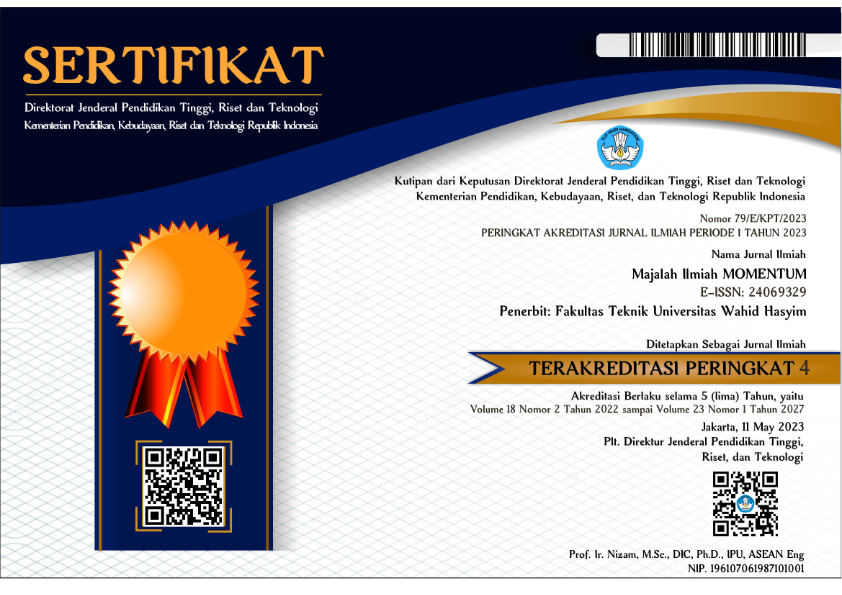PEKTIN SEBAGAI ALTERNATIF BAHAN BAKU BIOSORBEN LOGAM BERAT
DOI:
https://doi.org/10.36499/jim.v8i1.278Abstract
Berbagai kegiatan manusia sangat berpotensi menghasilkan limbahlogam berat. Limbah ini bila tidak diolah dengan baik akan menimbulkan
pencemaran lingkungan serta meracuni makhluk hidup termasuk manusia.
Diantara berbagai alternatif pengolahan limbah yang mengandung logam
berat, penggunaan biosorben memiliki beberapa keunggulan, diantaranya
biaya yang relatif murah, efisiensi yang tinggi pada larutan encer serta
kemudahan proses regenerasinya. Diantara berbagai bahan baku biosorben,
pektin merupakan salah satu komponen tumbuhan yang banyak mengandung
gugus aktif, yaitu komponen yang berperan penting dalam proses biosorpsi.
Pektin banyak terdapat pada daun, kulit dan buah pada berbagai tanaman.
Pektin yang dapat diaplikasikan sebagai biosorben logam berat adalah pektin
jenis LMP (Low Methoxyl Pectin) yang dapat langsung diambil dari tanaman
yang mengandung LMP atau dari HMP (High Methoxyl Pectin) yang
mengalami proses demetilasi atau modifikasi. Kinetika proses biosorpsi logam
berat dengan biosorben pektin dapat mengikuti model kinetika tingkat dua
semu, sedangkan kesetimbangan isothermnya dapat mengikuti model Langmuir
atau Freunlich. Beberapa penelitian penggunaan pektin sebagai biosorben
logam berat diantaranya adalah penggunaan pektin dari pulpa gula beet dan
pektin dari kulit buah durian.
Kata kunci : biosorben, logam berat, pektin
Downloads
Published
Issue
Section
License
Authors who publish with this journal agree to the following terms:
The journal allow the authors to hold the copyright without restrictions and allow the authors to retain publishing rights without restrictions.
Authors retain copyright and grant the journal right of first publication with the work simultaneously licensed under a Creative Commons Attribution License that allows others to share the work with an acknowledgement of the work's authorship and initial publication in this journal.
Authors are able to enter into separate, additional contractual arrangements for the non-exclusive distribution of the journal's published version of the work (e.g., post it to an institutional repository or publish it in a book), with an acknowledgement of its initial publication in this journal.
Authors are permitted and encouraged to post their work online (e.g., in institutional repositories or on their website) prior to and during the submission process, as it can lead to productive exchanges, as well as earlier and greater citation of published work (See The Effect of Open Access).

This work is licensed under a Creative Commons Attribution 4.0 International License.







